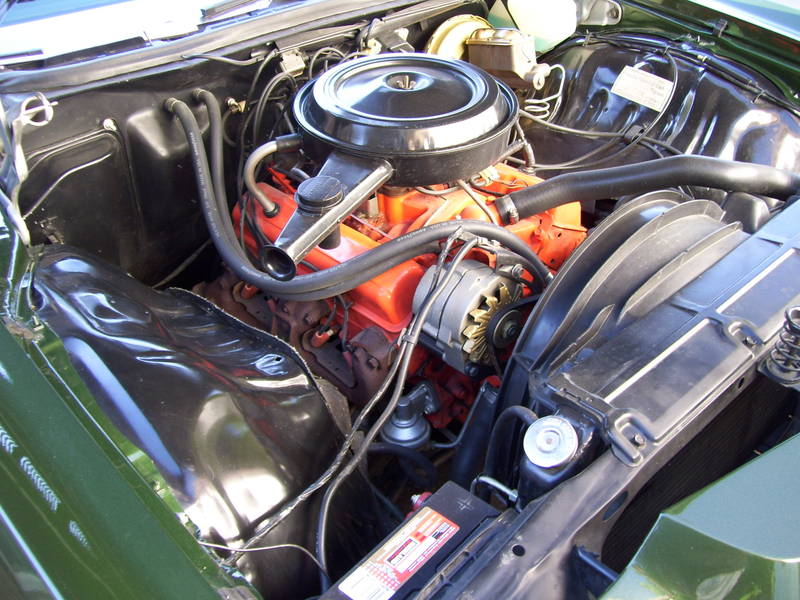
(Image/Curbside Classic)
You’ve got questions, we’ve got answers. We work with the Summit Racing tech department to help you tackle your auto-related conundrums. In this week’s Mailbag, we’re recommending a drivetrain combo to breathe more energy and efficiency into a tired old 350 small block V8 engine.
Q: I have a 1972 Impala with a tired 350 engine, Turbo Hydra-Matic 350 transmission, and 2.73 rear axle gears. I need a recipe for a fuel-efficient drivetrain combination for this car. I want to keep it carbureted, if possible. What would you recommend?
A: You used the word right there in the question—“efficient.” Efficient engines operate efficiently, so here’s a tried-and-true recipe for building one.
Start by building the bottom end of the engine, paying close attention to assembly tolerances. You want to keep them on the tight side. We suggest using hypereutectic pistons because of their tighter piston-to-cylinder-wall clearances. Keep the compression ratio around 9.0:1.
For a camshaft, we recommend a COMP Cams hydraulic cam. With 203/212 degrees duration at .050 and .421/.451 inches of lift, it’s designed to deliver good low-end torque and gas mileage. We also recommend a set of Trick Flow 23-degree aluminum heads. They can tolerate more compression than iron heads, making the engine more efficient. The Trick Flow heads are also a lot lighter than iron, and the less weight you’re lugging around, the better.
An Edelbrock Performer intake manifold and 600-cfm Edelbrock Performer four-barrel carburetor will make a good induction system. You should get a calibration kit for the carburetor to fine-tune it to your engine combination.
For ignition, we recommend an MSD HEI distributor and MSD Blaster 2 ignition coil. This will give you optimum spark for more complete burning of the air/fuel mixture in the combustion chambers. A free-flowing 2¼-inch dual exhaust is a must. A set of small-tube headers would also help.
Since you are looking for maximum torque with the least amount of drivetrain loss, I would get a 700R-4 overdrive automatic transmission, a lockup torque converter, and a 3.20-3.45 rear axle gear ratio.
The name of the game for fuel economy is efficiency, and this combo is about as efficient as you can make a carbureted 350.

the 200R4 has a higher 1st gear of 1.00vs 0.67 and in my view a better transmission. a 3.42 tru trac lock up rear would be fine. and get rid of the carb and go with a fittech TBI 600hp with under the hood fuel pump but you will hear the pump working so if you don’t want to hear that put the fuel pump in the gas tank but that’s a different set up. as for the engine now days your better off getting from Chevy a 375 HP and get the dress up kit to go with that this engine puts out 415 hp with all forged internals. long tube headers with the H configured duel exaust and you will have one mean impala I put this set up in a 1989 Caprice Brougham LS and its not your grandma’s brougham.
Michael – are you trying to compare 4th gear (not 1st) gear ratios between the 700R4 and the 200R4? If so – the 4th in a 200R4 is 0.67 vs 0.70 in the 700R4, so you have more overdrive in the 200R4, but the 700R4 has a slightly lower 1st gear – 3.08 vs 2.9 something… I agree with you – the 200R4 is more efficient and bolts in as an exact replacement for the Turbo 350 (no driveshaft changes!), while the 700R4 is longer – creating driveshaft and crossover/mount changes.
I also like your FiTech 600HP TBI suggestion – not much more $$$ than a carb – with much better fuel control. And I would forget the MSD HEI & coil suggestions above – and just get a Stock 1986 HEI – it won’t have mechanical or vacuum advance – and the Fitech can be easily wired to control the timing.
My only struggle would the choice of a 5.3L LS Motor vs the 350 Chevy crate motor – I suppose a classic Impala should keep a classic 350 – but the LS could make as much HP with better fuel economy and a nicer idle.
How did the MPG mods work out. Its year 2020 now!